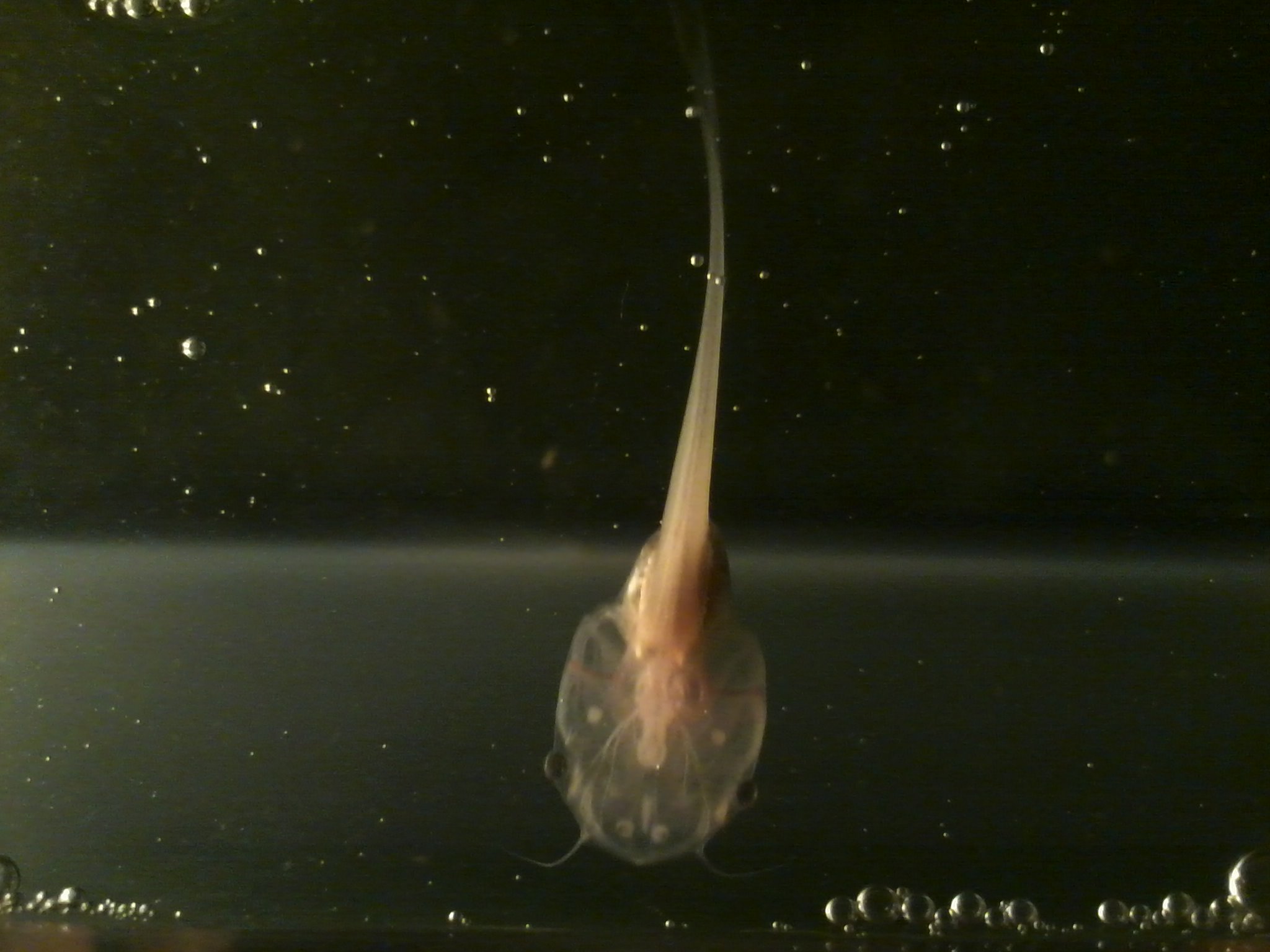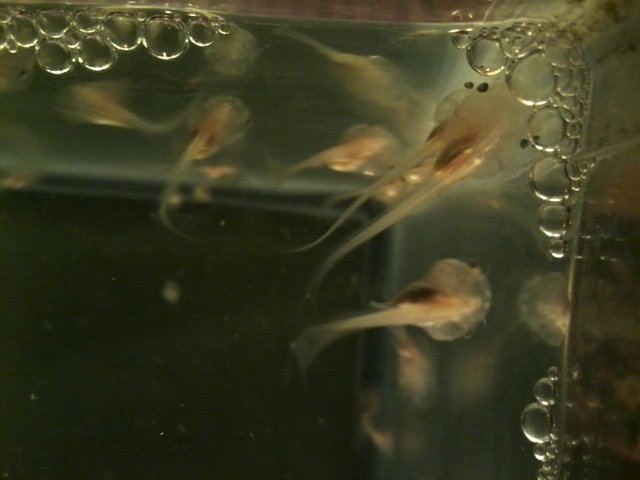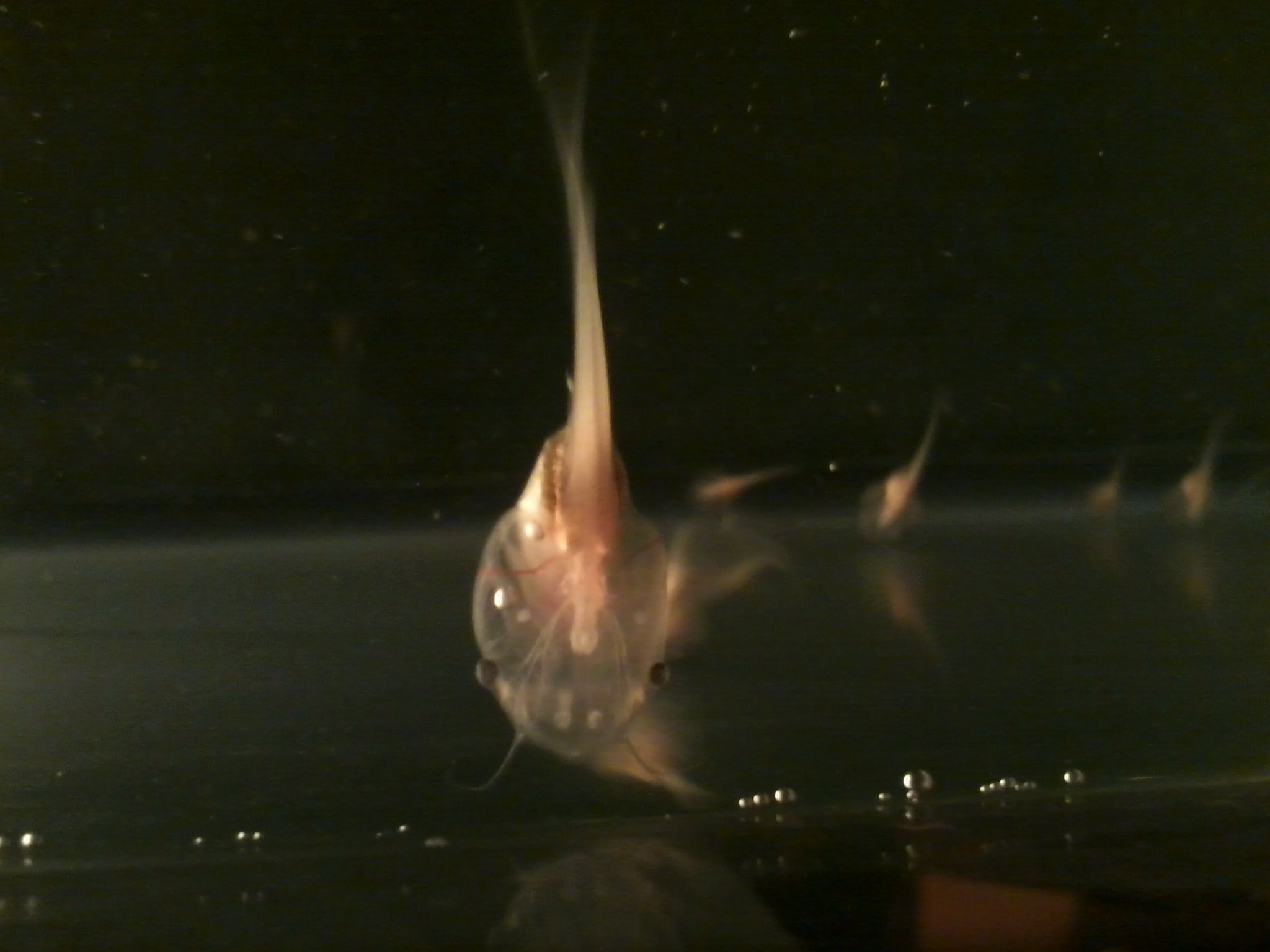Raising Tadpoles (Day 27) - Frog Cycling (Part 2)
Day 27
The largest tadpoles are now pushing 40 mm, the size differences are becoming quite significant. Due to the beginning stages of leg development being reached, along with the upgrade to a 20 gallon tank, food has been increased from 15 ml to 22 ml of tadpole suspension.

To continue the discussion about tank cycling from yesterday, an uncycled tank requires much closer attention to avoid deadly ammonia/nitrite spikes that can result from waste/food not being removed. In order to cycle a tank, a few things will be required depending upon whether it's a cycle with animals or without. Which ever cycling method you choose is up to you, cycling without animals in the tank is safer overall but will tank significantly longer than the 4-6 weeks required for a cycle with animals in the tank.

Cycling with animals in the tank can be accomplished safely through use of Seachem Prime, using Prime will bind any ammonia and nitrite in the water for up to two days. Just use a water testing kit to keep track of the initial ammonia spike, followed by the nitrite spike that will occur after the ammonia spike ends. This is the result of the bacterial colonies being established. Harmful ammonia is converted to, even more harmful, nitrite and nitrite is converted to the least harmful - nitrate. A simple water change removes the nitrates. If you have a previously used filter, using filter media from the old filter can massively decrease cycling time and even eliminate cycling altogether in some cases where the filter was previously cycled.

Throughout the process, PH and carbonate hardness (KH) will continue to play a role. KH will be consumed as the bacterial colony develops and if depleted can result in a PH crash. African Clawed Frogs thrive in basic water between 7 - 8 (I keep mine at 7.6). The bacterial colonies that act as your filter's biological filtration will slow down below 7 PH and stop working under 6. This is why it's important to test your tap water for not only toxins but hardness as well. If you have soft water, you'll have to harden it. I use about 2.6 grams/gallon of Epsom salt and 1.3grams/gallon baking soda. Due to the imprecision of my kitchen scale, I often have to readjust values as necessary. For those without a scale, about 1 teaspoon baking soad and 1 tablespoon Epsom salt per 10 gallons will work.
The photos were epic today!! Thanks. Its cool to see their development. So these are African clawed!!! Frogs or did i read that wrong?!?
I'd have to say photo-wise the credit lies with the tadpole who so generously stayed in place for a nearly a full minute while I took the pictures. :)
Yes, these are African Clawed Frogs, so named due to the three black claws on their feet used to kick at and tear up anything they can't swallow whole.

:O what you gonna do with them?? Please dont say dissect!!
Heavens no, I know a wholesaler who sells exclusively to local small pet shops, Once they become froglets, they're going there, though I have someone who's asked me to ship them one for their family so that leaves the 81. (Also, as far as I'm aware, most of the universities either have their own breeding setups or mostly just by from select large breeders.) Fun fact: These little fellows were used in hospitals and labs from the 1930s to 1950s as pregnancy tests.
My Cat :)

Keep spamming my comments section and I'm going to flag every comment you've made in the past week.
Excellent post!